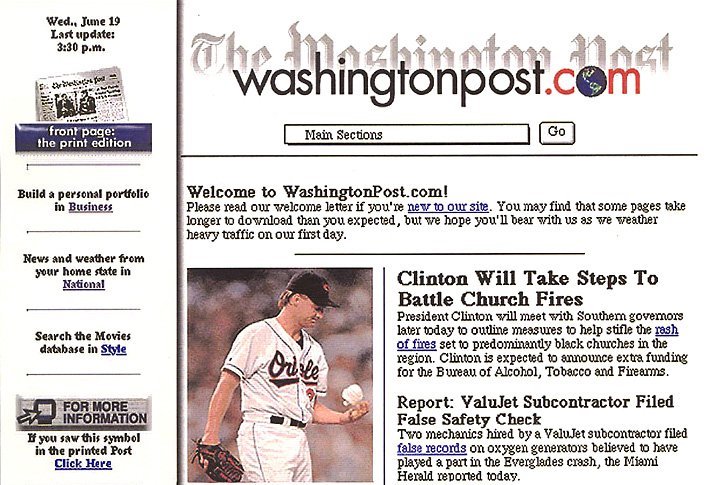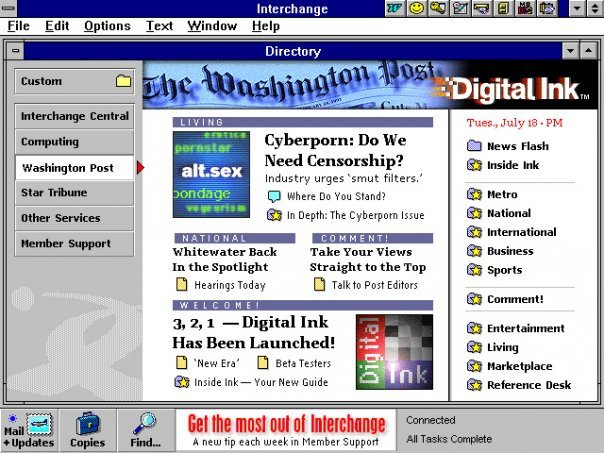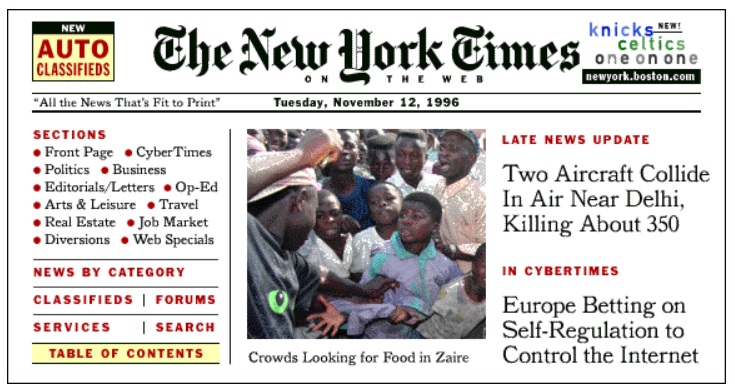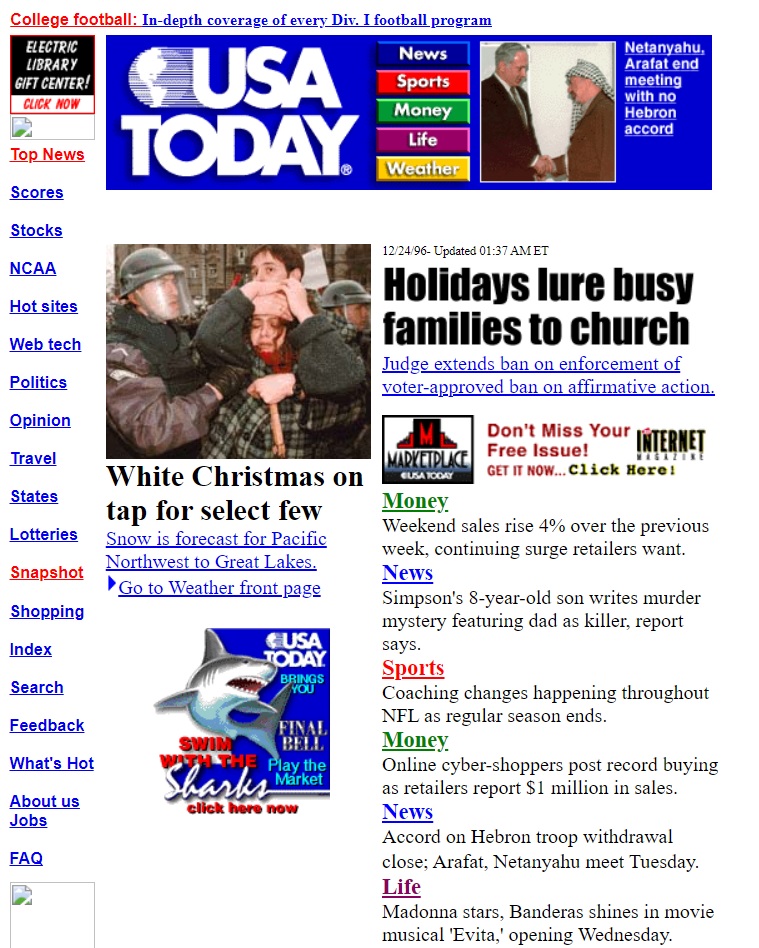WashingtonPost.com celebrates 25 years of online news publishing. The Washington Post’s website was launched in June 19, 1996. A note on the site read “Welcome to WashingtonPost.com!” It warns that users may find some pages take longer to download than expected. Furthermore, it warns any delay is due to heavy traffic on their first day.

Former Post employee, Jim Brady, shared the image of the first day’s homepage as well as some anecdotes. He says the launch day was the culmination of an eight week push to move from a dial-up proprietary system to the web.
While high-tech at the time, WashingtonPost.com workers had to go into the office to fix anything that broke. No remote work on websites in 1996. Brady says they “edited raw HTML code to update pages.” A far cry from today’s polished content management systems. They had great designers, but what they didn’t have were “tools that resemble anything used by web professionals today.”
“Nothing was easy, but it almost all exhilarating.”
Jim Brady, WashingtonPost.com launch team member
Digital Ink
The website was preceded by The Post’s electronic newspaper, Digital Ink. Howard Kurtz, then a Post reporter, described it this way:
Each menu screen has a newspaper-style layout, with a lead story, several smaller headlines and a tiny color photo (larger pictures take up to a minute to download).
Howard Kurtz, Washington Post reporter on March 1, 1995
Digital Ink would publish its first edition “electronically” at midnight. Wire service reports would flow in “around the clock.” The Washington, DC based newspaper tested the service among a group of 3,600 volunteers. The main complaint was the speed, or lack thereof.

“It’s so damned slow . . . it took me 15 minutes to look at three real estate ads,” said Duane Kidd, a computer specialist in Gaithersburg. “I’m using the computer to get information, not as a video arcade.”
The Post spent two years and millions of dollars on the Digital Ink effort. Yet the electronic circulation mirrored that of a small community newspaper.
1996 New Media
Other news outlets were prepping their websites in the mid 1990s. For example, The New York Times and USA TODAY had fully developed sites in the year WashingtonPost.com launched.

The New York Times touted their new discussion forums. Furthermore, the Times had a photo gallery of the 1996 Yankees on parade. Meanwhile, USATODAY.com adopted the newspaper’s colorful look.

In 1996, half of those on the Internet were new to it in the last 12 months. Modem connections meant slow access so a third of all Web users reportedly turned off graphics to increase speed. Furthermore, in 1996, only 39% of users thought there was a “great future for advertising and marketing on the Internet.” Rather, most saw potential for “information access”, communications and education.
The Post Today
Fast forward to today and the Post’s website is thriving. WashingtonPost.com is among the top 50 most digital properties, according to research firm Comscore. Furthermore, in April 2021, 77.8 million unique visitors accessed WashingtonPost.com on mobile devices or on desktop.
Other news publishers are thriving as well. The New York Times Digital reached nearly 86 million unique visitors in April 2021. 1996 Internet users might be surprised that digital ad revenue was the majority for the company. Digital ad revenue totaled $59.5 million for the most recent quarter, which is 61.3% of total ad revenue for the company. A year ago, this digital segment was 48.2% of total. Digital subscriptions are the focus for the Times and other publishing firms like News Corp.







